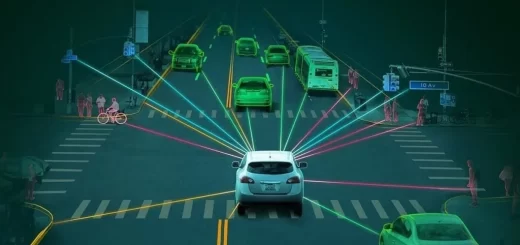Tesla robot vs. Atlas robot, What is the difference between Tesla and Atlas?, Which one do you prefer?
Tesla’s Optimus robot and Boston Dynamics’ Atlas robot are both advanced humanoid robots, but they have distinct designs, purposes, and developmental focuses. For practical, repetitive, cost-sensitive tasks, go with Tesla Optimus (once it becomes widely available). For cutting-edge performance, research, or extreme conditions, Boston Dynamics’ Atlas is unmatched.
Tesla vs. Atlas
Optimus targets practicality for industry and home use, focusing on scalability and cost-efficiency. Atlas showcases cutting-edge robotics and sets a benchmark for physical capabilities, but with no immediate plans for widespread commercialization. Tesla’s Optimus aims to eventually be an affordable, multi-purpose solution, while Atlas is more about pushing the limits of what robots can do physically.
Tesla’s Optimus is expected to be far more affordable when commercialized, while Atlas is a high-end technology demonstrator not available for mass production. Atlas is far superior in agility, physical complexity, and adaptability, but Optimus is likely better for repetitive, low-complexity tasks. Atlas is a mature platform, while Optimus is still in its early stages.
Tesla Optimus Robot
Tesla Optimus Robot is primarily designed for labor-intensive tasks in industrial settings. Tesla envisions it as a general-purpose robot for automating repetitive tasks, potentially even for home use.
Tesla Optimus Robot has a Human-like form with a sleek, minimalistic design. It is 5’8″ tall, 125 pounds. It is less focused on agility and designed more for controlled environments. It has limited dexterity compared to highly dynamic robots like Atlas.
Tesla Optimus Robot walks at a moderate speed (~5 mph). It can lift and carry moderate weights (about 20-40 lbs). It is focused on energy efficiency to perform tasks over extended periods. It emphasizes Tesla‘s AI and autopilot technologies for task learning.
Tesla Optimus Robot is still in the early stages; the prototypes are less advanced in mobility and physical dexterity. It has heavy integration of Tesla’s software expertise.
Boston Dynamics Atlas Robot
Boston Dynamics Atlas Robot is primarily a research robot for testing and showcasing advanced robotics technologies. It demonstrates extreme mobility, agility, and balance in many dynamic environments. It is more utilitarian and rugged; designed for performance over aesthetics. It is 4’11” tall, 190 pounds. It is compact, and optimized for dynamic movement rather than heavy lifting.
Boston Dynamics Atlas Robot performs acrobatics, parkour, and complex physical tasks like climbing, running, and jumping. It can recover from falls and navigate uneven terrains. It is highly dexterous and capable of using tools and manipulating objects with precision. Years ahead in terms of mobility and robustness. Atlas is primarily a technology demonstrator; commercial applications are not the main focus.
Tesla vs. Atlas robot, which one to choose?
Choosing between Tesla’s Optimus and Boston Dynamics’ Atlas robot depends entirely on your specific needs and priorities.
Choose Tesla’s Optimus Robot if:
Primary Purpose:
- You need a robot for repetitive, labor-intensive tasks in controlled environments (e.g., factories, warehouses, or homes).
- When there are tasks involve light lifting, simple object manipulation, or basic navigation.
Scalability and Cost:
- You prioritize affordability and scalability.
- Tesla‘s vision is to produce Optimus robots at a relatively low cost for widespread use.
Energy Efficiency:
- Long operating hours and energy efficiency are crucial.
- Optimus is designed to work continuously in specific task domains.
Integration with Tesla Ecosystem: If you already use Tesla products or AI systems, Optimus might integrate seamlessly into your workflows or smart systems.
Choose Boston Dynamics’ Atlas Robot if:
Primary Purpose:
- You need a robot for highly dynamic and physically complex tasks (e.g., navigating uneven terrains, performing acrobatics, or tasks in hazardous environments).
- The application requires advanced agility, balance, and dexterity.
Research and Development: You are exploring cutting-edge robotics or want a platform for advanced robotics research and experimentation.
Extreme Environments: The robot will operate in unpredictable or challenging conditions where mobility and adaptability are critical.
Showcasing Technology: You want to demonstrate state-of-the-art robotics capabilities for public relations, training, or educational purposes.
You can follow Science Online on Youtube from this link: Science online
You can download Science Online application on Google Play from this link: Science Online Apps on Google Play
Boston Dynamics Atlas review, advantages and features, How does Atlas robot work?
Tesla robots (Optimus) review, use, advantages and disadvantages
Emo robot review, advantages, disadvantages, features and what can Emo do?
Advantages and disadvantages of using robots in our life
Artificial intelligence (AI) definition, advantages, disadvantages, features and applications
Robot teachers use, advantages and disadvantages
Sophia robot review, features, use, advantages and disadvantages
Vector robot review, advantages, disadvantages and specifications




